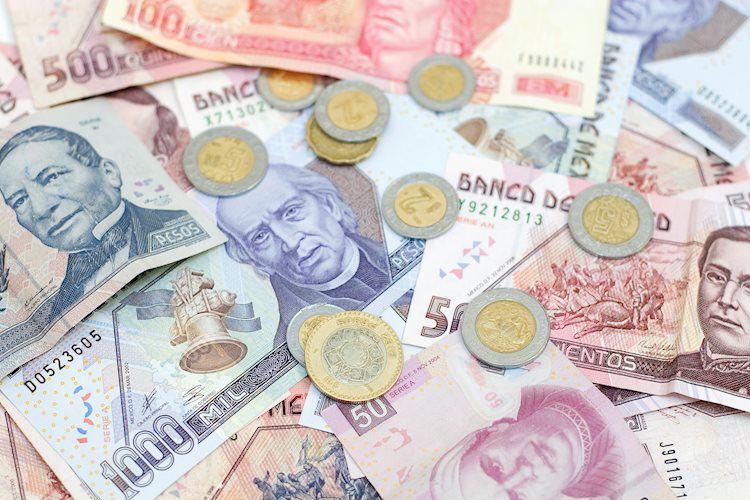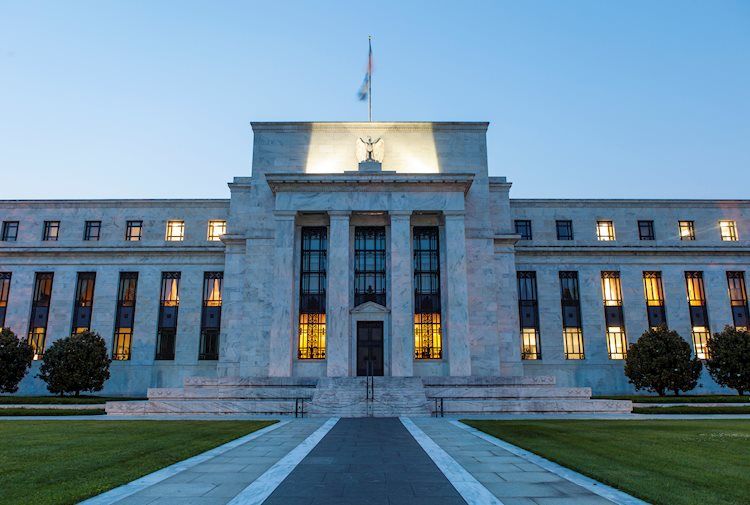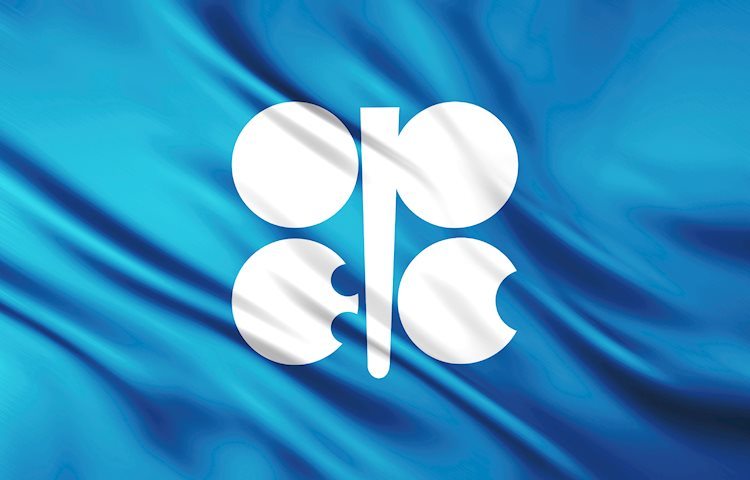[ad_1]
- Mexican Peso continues its five-day rally as the USD/MXN drops below the key support at the 100-day SMA.
- Banxico’s officials comments suggest the central bank would adopt a slightly dovish stance in 2024.
- The US inflation downward path continues as export and import prices plunge.
- Industrial Production in the United States suggests the economy could slow down faster than expected.
Mexican Peso (MXN) extended its gains for the fifth consecutive day against the US Dollar (USD) after a raft of economic data from the United States (US) continues to cement a scenario of no more rate hikes by the US Federal Reserve (Fed). The USD/MXN pair hit a daily high at around 17.33, below the 100-day Simple Moving Average (SMA) of 17.34, before resuming its downtrend, which was positive for the Peso.
Mexico’s economic docket remains scarce, with traders leaning to the latest comments from Bank of Mexico (Banxico) officials, its Governor Victoria Rodriguez Ceja, and Deputy Governor Jonathan Heath. Both stressed rate cuts could begin in 2024 but emphasized that monetary policy would continue to be restrictive despite that.
On the US front, inflation extended its downtrend after prices paid by producers followed the path of lower consumer prices, though the latter remained above the Fed’s 2% target. Thursday’s US economic docket featured export and import prices, both figures easing more than expected, while industrial production (IP) contracted in October, according to data revealed by the Fed.
Other data revealed by the US Department of Labor revealed the jobs market is cooling, a sign sought by the Federal Reserve as they try to slow down the economy to grow below trend.
Daily digest movers: Mexican Peso on its path to test the psychological 17.00 figure
- In October, Industrial Production in the United States missed estimates for a 0.3% plunge and dropped 0.6% MoM and following September’s 0.1% expansion. On a yearly basis, it fell 0.7%.
- The Philadelphia Fed Manufacturing Index improved lightly to -5.9 versus expectations of -9 points.
- US Initial Jobless Claims for the week ending November 11 rose 231K, exceeding forecasts of 220K, the highest jump in nearly three months.
- The US Producer Price Index and Consumer Price Index reports in October, suggests prices are cooling down, which has increased the odds for an end of the US Federal Reserve tightening cycle.
- Interest rates swap traders, expect 100 basis points of rate cuts by the Fed in 2024.
- Banxico’s Deputy Governor Jonathan Heath said the Government Board continues to monitor real rates, which currently lie at around 7%.
- Heath said Banxico wouldn’t rely on other countries – usually, Banxico reacts to the US Federal Reserve’s decisions – and said they would depend on incoming data and how inflation expectations evolve.
- On Monday, Banxico’s Governor Victoria Rodriguez Ceja commented that the easing inflationary outlook could pave the way for discussing possible rate cuts. She said that monetary policy loosening could be gradual but not necessarily imply continuous rate cuts, adding that the board would consider macroeconomic conditions, adopting a data-dependent approach.
- The latest inflation report in Mexico, published on November 9, showed prices grew by 4.26% YoY in October, below forecasts of 4.28% and prior rate of 4.45%. On a monthly basis, inflation came at 0.39%, slightly above the 0.38% consensus and September’s 0.44%.
- Mexico’s economy remains resilient after October’s S&P Global Manufacturing PMI improved to 52.1 from 49.8, and the Gross Domestic Product (GDP) expanded by 3.3% YoY in the third quarter.
- Banxico revised its inflation projections from 3.50% to 3.87% for 2024, which remains above the central bank’s 3.00% target (plus or minus 1%).
Technical Analysis: Mexican Peso extends its rally, with USD/MXN sliding below the 100-day SMA
The USD/MXN pair bias has shifted downwards in the short term, as the pair broke below the 100-day Simple Moving Average (SMA) at 17.34. The next support level would be the psychological 17.00 figure. The pair has shifted bearishly, with the 20-day SMA approaching the 17.70-17.65 area, where the 50- and 200-day SMAs converge. If the bearish cross is completed, it could pave the way for a test of the psychological 17.00 figure, ahead of challenging the year-to-date (YTD) low of 16.62, printed in July.
On the other hand, if USD/MXN buyers reclaim the 100-day SMA at 17.34, that could put into play a test of the 17.50 mark in the near term. A breach of the latter would expose key resistance levels, like the 200-day SMA at 17.64, ahead of the 50-day SMA at 17.69. Once cleared, the next resistance emerges at the 20-day SMA at 17.87 before buyers could lift the spot price towards the 18.00 figure.
Risk sentiment FAQs
In the world of financial jargon the two widely used terms “risk-on” and “risk off” refer to the level of risk that investors are willing to stomach during the period referenced. In a “risk-on” market, investors are optimistic about the future and more willing to buy risky assets. In a “risk-off” market investors start to ‘play it safe’ because they are worried about the future, and therefore buy less risky assets that are more certain of bringing a return, even if it is relatively modest.
Typically, during periods of “risk-on”, stock markets will rise, most commodities – except Gold – will also gain in value, since they benefit from a positive growth outlook. The currencies of nations that are heavy commodity exporters strengthen because of increased demand, and Cryptocurrencies rise. In a “risk-off” market, Bonds go up – especially major government Bonds – Gold shines, and safe-haven currencies such as the Japanese Yen, Swiss Franc and US Dollar all benefit.
The Australian Dollar (AUD), the Canadian Dollar (CAD), the New Zealand Dollar (NZD) and minor FX like the Ruble (RUB) and the South African Rand (ZAR), all tend to rise in markets that are “risk-on”. This is because the economies of these currencies are heavily reliant on commodity exports for growth, and commodities tend to rise in price during risk-on periods. This is because investors foresee greater demand for raw materials in the future due to heightened economic activity.
The major currencies that tend to rise during periods of “risk-off” are the US Dollar (USD), the Japanese Yen (JPY) and the Swiss Franc (CHF). The US Dollar, because it is the world’s reserve currency, and because in times of crisis investors buy US government debt, which is seen as safe because the largest economy in the world is unlikely to default. The Yen, from increased demand for Japanese government bonds, because a high proportion are held by domestic investors who are unlikely to dump them – even in a crisis. The Swiss Franc, because strict Swiss banking laws offer investors enhanced capital protection.
[ad_2]
Source link


